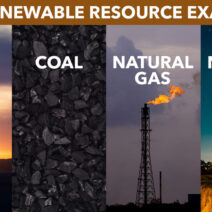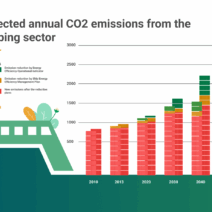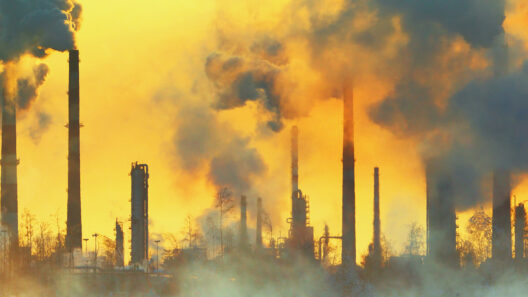Climate change has emerged as the quintessential conundrum of our time, akin to a colossal ship adrift in turbulent waters, threatening to sink the very ideals of progress and prosperity that humanity has long cherished. The specter of rising temperatures, unpredictable weather patterns, and environmental degradation looms large over society, catalyzing an urgent quest for solutions. The question that remains unresolved is simple yet profound: How can we solve climate change? This inquiry demands a multifaceted exploration of strategies drawn from both scientific inquiry and societal innovation.
To begin with, it is imperative to understand the scientific underpinnings of climate change. At its core, climate change is a consequence of anthropogenic greenhouse gas emissions, primarily carbon dioxide (CO2) and methane (CH4). These gases create a veritable blanket around the Earth, trapping heat and leading to global warming. Thus, the first step in addressing this existential crisis is reducing our carbon footprint. The transition to renewable energy sources is paramount. Solar, wind, and hydroelectric power present viable alternatives to fossil fuels, which have long dominated the energy landscape. This shift is not merely a suggestion; it is a necessity. Investing in green technologies can usher in a new era of sustainable energy, illuminating our path forward.
Meanwhile, the embrace of energy efficiency serves as another cornerstone in our climate arsenal. Homes, factories, and transportation systems can all benefit from enhanced efficiency measures. Consider retrofitting buildings with advanced insulation and energy-efficient appliances. This metamorphosis does not require a complete overhaul; it can unfold gradually, enabling individuals and businesses alike to make incremental changes that collectively yield significant impacts. Every watt saved equates to less fossil fuel consumed, less pollution emitted, and a brighter future ahead.
In the realm of scientific innovation, carbon capture and storage (CCS) technologies have garnered increasing attention. These systems function much like an intricate net, designed to ensnare CO2 emissions directly from their sources, such as coal-fired power plants, and sequester them underground. It is a compelling notion—taking our most deleterious byproduct and transforming it into a non-threatening presence beneath our feet. Investing in research to enhance the efficacy of these technologies can help decouple economic growth from carbon emissions.
However, technology alone will not suffice. Society must also undergo a profound transformation in its cultural and behavioral paradigms. Education and awareness are the twin engines driving this revolution. A populace that understands the stakes involved is more likely to demand action from policymakers and to adopt sustainable practices in their everyday lives. Schools, community organizations, and media outlets must collaborate to disseminate information about climate science and advocacy. This social contract empowers individuals to act, whether by reducing waste, advocating for policy change, or supporting sustainable businesses.
As communities mobilize, the power of grassroots movements cannot be overstated. The recent surge in climate activism showcases a societal awakening—a collective realization that change does not come from the top down but from the ground up. The youth-led climate strikes, for instance, have effectively ushered a new generation into the arena of environmental advocacy. These movements instill a sense of urgency and collective responsibility, creating a ripple effect that can influence political discourse and reshape societal norms.
In the political realm, legislation plays a vital role in circumventing climate change. Comprehensive policies must prioritize sustainability and environmental protection. Implementing carbon pricing mechanisms, such as cap-and-trade systems or carbon taxes, can incentivize businesses to reduce their emissions and invest in cleaner technologies. A strong regulatory framework can compel industries to innovate and adopt eco-friendly practices while simultaneously holding them accountable for their environmental impacts. A concerted effort from governments around the world, especially major polluters, is crucial in this global endeavor.
International cooperation can be likened to a tightly woven tapestry—every thread represents a nation, each contributing its unique strengths to the collective effort against climate change. Agreements like the Paris Accord exemplify this cooperative spirit, aiming to limit global warming to well below 2 degrees Celsius. Such treaties require commitment and action from both developed and developing nations; wealthier countries must support emerging economies in their sustainable transitions, ensuring that equitable growth is achievable for all.
Moreover, the role of natural ecosystems in climate change mitigation remains critically important. Forests, wetlands, and oceans serve as invaluable carbon sinks, absorbing CO2 from the atmosphere. Preserving these habitats and implementing reforestation projects can enhance their natural ability to sequester carbon. Biodiversity within these ecosystems also promotes resilience, enabling them to withstand the challenges posed by climate change. Thus, conservation efforts must be interwoven with climate strategies, recognizing that nature itself can be our greatest ally in this fight.
As we navigate these tumultuous waters, it becomes evident that the solution to climate change is not singular or straightforward; rather, it is a mosaic of interlinked strategies spanning science, society, and governance. Each facet plays a crucial role in constructing a sustainable future. Humanity stands at a crossroads, with the potential to turn the tide against climate change. But this formidable challenge requires collective effort, innovative thinking, and an unwavering commitment to change. The ship can still be redirected, but it necessitates a shared vision and relentless determination from every corner of society. Together, we can sow the seeds of a sustainable future, nurturing a verdant planet for generations to come.



